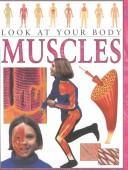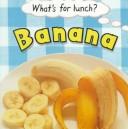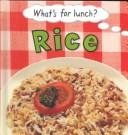Related
3,462 Reviews
(4)
4-6
Look at Your Body series.
In each book, double-page spreads address thirteen topics with large-type introductory paragraphs, smaller-type secondary paragraphs, captioned drawings, photographs, and photographs with superimposed art. While the explanations are clear, the page layout is sometimes confusing, with the topic title and main paragraph on the right-hand, not the left-hand, page. Glos., ind.
Reviewer: The Horn Book, Inc.
Peacock, Carol Antoinette
, Gregory, Adair
& Gregory, Kyle Carney
Jones, Mary, Illustrator
Sugar Was My Best Food: Diabetes and Me
(4)
4-6
Don't be put off by this book's title, unattractive cover, and unengaging black-and-white illustrations, for inside is an informative and often humorous account of one boy's real-life struggle with the discovery that he is diabetic. Moving beyond the usual scientific explanations, Adair's upbeat but honest narrative focuses on the often trying emotional and practical aspects of dealing with the disease.
Reviewer: The Horn Book, Inc.
(4)
4-6
Your World Explained series.
A systematic examination of the technological innovations from the ancient world to 1990. The text fails to mention a single female inventor and offers mostly British examples of inventions and inventors. Double-page topical spreads contain numerous captioned photos and illustrations along with the text. A useful time line of inventions is appended. Glos., ind.
Reviewer: The Horn Book, Inc.
(4)
K-3
Machines at Work series.
On the Farm, the more focused of these books, explains the operations of a variety of farm machines--a combine harvester cuts wheat, a slurry spreader spreads manure, etc. On the Move, an overview of vehicles used mainly for transportation, includes a hodgepodge of arbitrary facts about vehicles--pollution, traffic, etc. Both brief photo-essays are best used in conjunction with other books on the subjects. Glos., ind.
Reviewer: Mary Burkey
(4)
K-3
Machines at Work series.
On the Farm, the more focused of these books, explains the operations of a variety of farm machines--a combine harvester cuts wheat, a slurry spreader spreads manure, etc. On the Move, an overview of vehicles used mainly for transportation, includes a hodgepodge of arbitrary facts about vehicles--pollution, traffic, etc. Both brief photo-essays are best used in conjunction with other books on the subjects. Glos., ind.
Reviewer: Mary Burkey
(3)
K-3
Senses series.
These are not anatomical descriptions of human senses but explorations and appreciation of what we know of the world because of our senses. A simple text in a large typeface is accompanied by well-chosen color photographs. Concepts are extended in each volume in a page of "investigations" for adults to use with children to encourage articulate and thoughtful observation.
Reviewer: The Horn Book, Inc.
(3)
K-3
Senses series.
These are not anatomical descriptions of human senses but explorations and appreciation of what we know of the world because of our senses. A simple text in a large typeface is accompanied by well-chosen color photographs. Concepts are extended in each volume in a page of "investigations" for adults to use with children to encourage articulate and thoughtful observation.
Reviewer: The Horn Book, Inc.
(3)
K-3
Senses series.
These are not anatomical descriptions of human senses but explorations and appreciation of what we know of the world because of our senses. A simple text in a large typeface is accompanied by well-chosen color photographs. Concepts are extended in each volume in a page of "investigations" for adults to use with children to encourage articulate and thoughtful observation.
Reviewer: The Horn Book, Inc.
(3)
K-3
Senses series.
These are not anatomical descriptions of human senses but explorations and appreciation of what we know of the world because of our senses. A simple text in a large typeface is accompanied by well-chosen color photographs. Concepts are extended in each volume in a page of "investigations" for adults to use with children to encourage articulate and thoughtful observation.
Reviewer: The Horn Book, Inc.
(3)
K-3
Senses series.
These are not anatomical descriptions of human senses but explorations and appreciation of what we know of the world because of our senses. A simple text in a large typeface is accompanied by well-chosen color photographs. Concepts are extended in each volume in a page of "investigations" for adults to use with children to encourage articulate and thoughtful observation.
Reviewer: The Horn Book, Inc.
(3)
K-3
Machines at Work series.
Up-close, glossy photos and spare, large-type text clearly convey each step in the process of building a road and erecting a building. Many of the photos are action shots (including a snapshot series of a building being dynamited), which provide a realistic you-are-there sense of the job. Glos., ind.
Reviewer: The Horn Book, Inc.
(3)
K-3
Machines at Work series.
Up-close, glossy photos and spare, large-type text clearly convey each step in the process of building a road and erecting a building. Many of the photos are action shots (including a snapshot series of a building being dynamited), which provide a realistic you-are-there sense of the job. Glos., ind.
Reviewer: The Horn Book, Inc.
(4)
4-6
The text explains how modern science and traditional healing methods often intersect as drug companies and government agencies explore plants for substances to treat disease. Powledge briefly describes how research is conducted, the urgency of preserving both tropical and temperate forests, and the usefulness of several specific plants while repeatedly interjecting didactic cautions against drug experimentation. Glos.
Reviewer: The Horn Book, Inc.
(4)
K-3
Changes series.
With minimal texts and oversized photographs, each of these volumes describes the basic steps involved in making finished industrial products from raw materials. The friendly tone of the texts is inviting, but the grainy, muddy photographs are, on the whole, unimaginatively composed (due perhaps to the fact that they were taken primarily from stock sources).
Reviewer: The Horn Book, Inc.
(4)
K-3
Cutaway series.
Large, fairly simple cutaway illustrations provide an inside look at how the vehicles are designed and perform, while a very brief accompanying text supplies explanatory details, historical background, and "fantastic facts." The illustrations are the work of several artists, whose styles vary in quality. Additional color photographs of the vehicles in action are often mediocre. Glos., ind.
Reviewer: The Horn Book, Inc.
(4)
K-3
Cutaway series.
Large, fairly simple cutaway illustrations provide an inside look at how the vehicles are designed and perform, while a very brief accompanying text supplies explanatory details, historical background, and "fantastic facts." The illustrations are the work of several artists, whose styles vary in quality. Additional color photographs of the vehicles in action are often mediocre. Glos., ind.
Reviewer: The Horn Book, Inc.
(4)
K-3
What's for Lunch? series.
The title of the series serves as an artificial framework for simple explanations of food production and processing. Declarative sentences and color photos describe each step in growing, cultivating, fertilizing, controlling pests, and harvesting. (In 'Honey', commercial beekeeping is described.) A few final products are shown: corn flakes, potato chips, chocolate candies, etc. Glos., ind.
Reviewer: The Horn Book, Inc.
(4)
K-3
What's for Lunch? series.
The title of the series serves as an artificial framework for simple explanations of food production and processing. Declarative sentences and color photos describe each step in growing, cultivating, fertilizing, controlling pests, and harvesting. (In 'Honey', commercial beekeeping is described.) A few final products are shown: corn flakes, potato chips, chocolate candies, etc. Glos., ind.
Reviewer: The Horn Book, Inc.
(4)
K-3
What's for Lunch? series.
The title of the series serves as an artificial framework for simple explanations of food production and processing. Declarative sentences and color photos describe each step in growing, cultivating, fertilizing, controlling pests, and harvesting. (In 'Honey', commercial beekeeping is described.) A few final products are shown: corn flakes, potato chips, chocolate candies, etc. Glos., ind.
Reviewer: The Horn Book, Inc.
(4)
K-3
What's for Lunch? series.
The title of the series serves as an artificial framework for simple explanations of food production and processing. Declarative sentences and color photos describe each step in growing, cultivating, fertilizing, controlling pests, and harvesting. (In 'Honey', commercial beekeeping is described.) A few final products are shown: corn flakes, potato chips, chocolate candies, etc. Glos., ind.
Reviewer: The Horn Book, Inc.
3,462 reviews
We are currently offering this content for free. Sign up now to activate your personal profile, where you can save articles for future viewing.






















